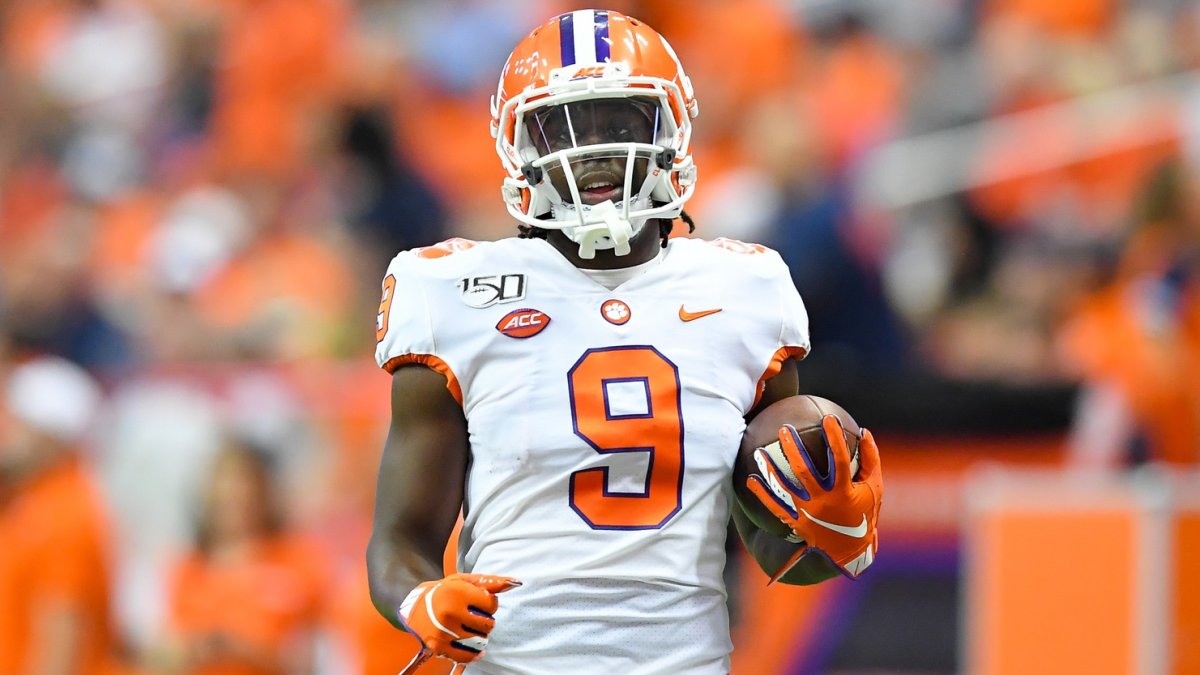We dove into the opportunity for rookie wide receivers yesterday, and we now turn our attention to rookie running backs. The implied rushing and receiving production for running backs based on their collective average draft positions (ADP) should be roughly equal to the total output for the backfield in our projections.
Assuming the single backfield projection is more accurate than those for a collection of running backs, large differences in projections can mean a couple of things: Current running backs are misvalued, or there is an underlying assumption that the team will add additional running backs in the draft.
It’s the latter that I’m exploring in this piece, using ADP to find teams with weaker collective backfield ADP than those of our projections and thereby identifying which teams have the most opportunity for rookie additions at running back. In addition to mismatched value, I’ll also be using a concept that originated in economics that Football Perspective’s Chase Stuart applied to receiving shares called the concentration index.
The final metric for judging rookie running back opportunity — each team’s opportunity score — combines the mismatches in projections for team backfields and ADP implied numbers for running backs with the concentration indexes, where fewer concentrated carries among current running backs means more opportunity.
More of PFF's 2021 NFL Draft tools here:
2021 NFL Draft Big Board | 2021 NFL Draft Guide | 2021 NFL Draft Stats Export | NFL Mock Drafts | NFL Mock Draft Simulator
CONCENTRATION INDEX
In this analysis, I’m using the concentration index to measure how much top running backs on a team dominate the share of carries. The theory is that the less dominant the top running back share projections, the more room there is for a new rookie to steal share from weaker competitors.
The concentration index quantifies the degree of concentration by squaring shares and then adding them together. In a simple example, if a single running back got 100% (of a ratio of 1) of the carries and the rest zero, the squared sum of the target ratios is one, the highest possible concentration index. If another team spread out the ball equally to four running backs at 25% of targets (0.25 ratio), the squared sum of the ratios is 0.25.
Below are our projected target shares for the top three running backs on the team with the highest carry concentrations in the NFL. In this table, the “concentration” is the squared sums of the running back shares multiplied by 100.
| Team | RB1 Share | RB2 Share | RB3 Share | Concentration |
| Panthers | 88% | 11% | 2% | 77.7 |
| Giants | 82% | 10% | 9% | 68.5 |
| Bengals | 77% | 15% | 6% | 61.7 |
| Titans | 76% | 17% | 6% | 60.7 |
| Cowboys | 70% | 29% | 1% | 57.1 |
The concentration index does a good job of quantifying our understanding of the teams that would have the least opportunity for a rookie running back to join and take share. It makes sense that a rookie would have little opportunity to establish themselves as a top-tier player with the Carolina Panthers while competing for carries with Christian McCaffrey, or the Tennessee Titans with Derrick Henry. The teams above combine strong lead running backs with weaker backups, though Tony Pollard is the best of the bunch.
On the flip side, the teams with the lowest concentration of carries for top running backs are the ones we want to identify as great landing spots for rookie running backs. The teams with the lowest concentrations are in the table below, and these are the ones who will score higher in the final opportunity score calculation, which also includes the mismatch in projected backfield production and that implied by player ADPs.
Exclusive content for premium subscribers

WANT TO KEEP READING?
Dominate Fantasy Football & Betting with AI-Powered Data & Tools Trusted By All 32 Teams
Already have a subscription? Log in




 © 2025 PFF - all rights reserved.
© 2025 PFF - all rights reserved.